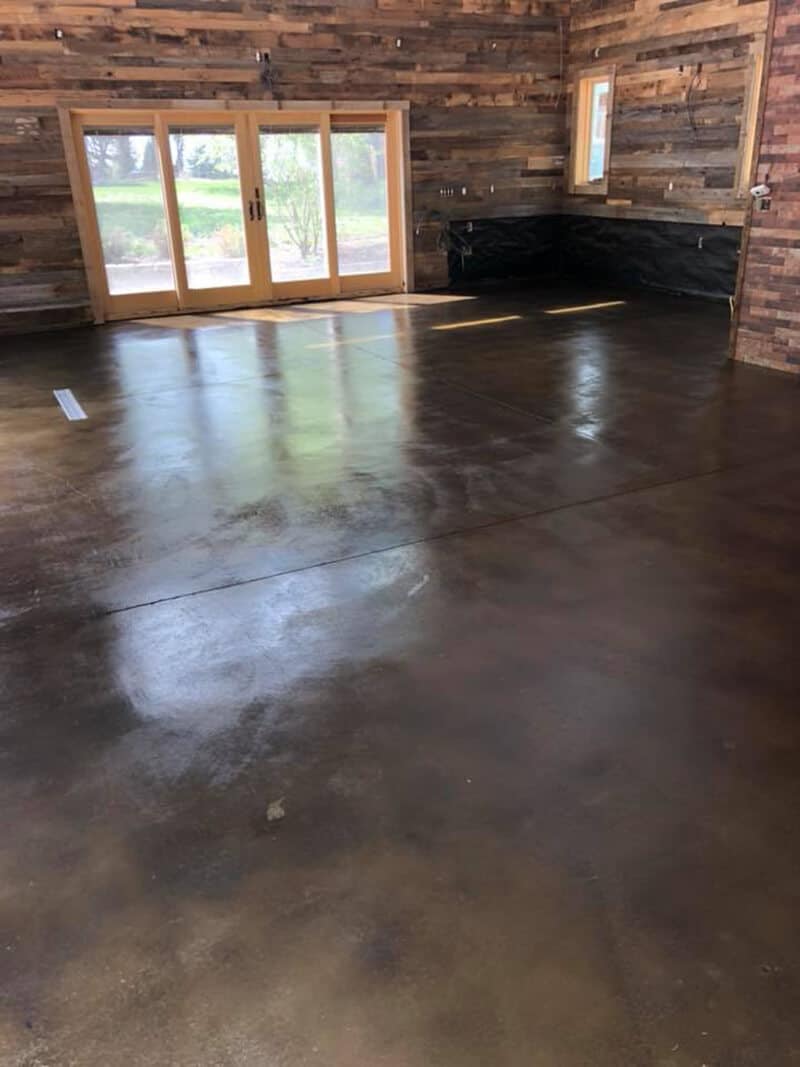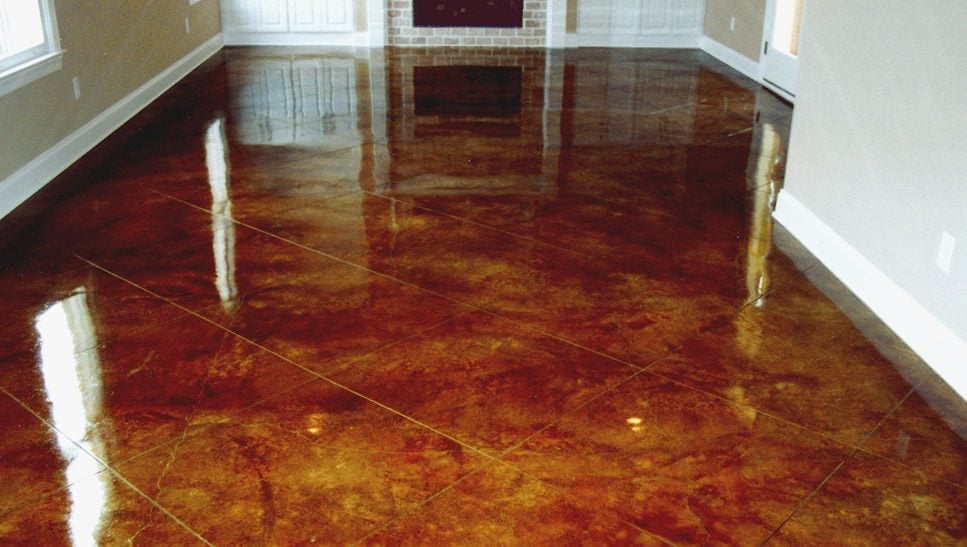Why Local Discolored Flooring Is the Perfect Choice for Sustainable Home Renovation
In the world of sustainable home improvement, local stained floor covering has arised as a preferred selection amongst eco aware homeowners. As an affordable investment with decreased maintenance demands, it increases a thought-provoking question: could this be the optimal solution for lasting housing?
Recognizing the Idea of Neighborhood Tarnished Flooring
While the concept could seem unique to some, neighborhood stained flooring is an ingenious technique to home enhancement that incorporates visual appeals, longevity, and sustainability. The term refers to making use of locally sourced timber that is stained to attain a distinctive aesthetic charm. The staining process not just improves the natural appeal of the timber grain however also adds a layer of defense, raising the durability of the floor covering. This approach is considered sustainable as it lowers the need for transport of resources from far-off locations, thus lessening carbon impacts. Using local wood types typically sustains local economic situations and promotes accountable forest monitoring methods. This principle, as a result, provides home owners an environmentally liable selection without compromising visual appeal or longevity.
The Visual Appeal of Neighborhood Discolored Flooring
Why is regional stained floor covering getting popularity for its visual appeals? Regional stained floor covering uses a diverse variety of colors and patterns, showing the natural elegance and variants of the regional timber species utilized. Ultimately, the allure of neighborhood stained floor covering exists in its capacity to transform homes into distinctive, aesthetically appealing areas while promoting sustainability.
Ecological Effects of Local Tainted Flooring
The ecological ramifications of local stained floor covering include two considerable aspects: decreasing carbon impact and waste minimization advantages. Utilizing in your area sourced materials for tarnishing not just decreases transportation emissions, but also promotes lasting forestry methods. The waste minimization facet comes right into play as these flooring types usually have a longer life-span, reducing the frequent requirement for substitutes and the waste linked with it.
Lowering Carbon Impact
As property owners turn to even more sustainable alternatives, neighborhood stained flooring emerges as a practical remedy to reduce carbon impact. This kind of flooring mainly makes use of in your area sourced materials, which significantly minimizes the need for transportation. Subsequently, this reduces exhausts linked with products transportation, adding to lower degrees of greenhouse gases in the atmosphere. Additionally, the procedure of discoloring the floor covering, rather than utilizing artificial layers, entails less chemicals and less energy-intensive procedures. This results in a decline in carbon emissions throughout the manufacturing process. Choosing local stained floor covering shows a reliable procedure in promoting ecological sustainability, highlighting a tangible way house owners can contribute to combating climate modification from the convenience of their very own homes.
Waste Minimization Advantages
Although frequently ignored, waste minimization is another considerable advantage of local tarnished flooring. Additionally, the discoloration process makes use of fewer sources and creates less waste contrasted to making brand-new floor covering materials. The selection of regional tarnished flooring not just enhances homes but likewise underpins a dedication to sustainable living and waste decrease.
The Durability and Upkeep of Neighborhood Discolored Floor Covering

The Cost-Effectiveness of Neighborhood Stained Floor Covering
While neighborhood stained floor covering might originally seem a lot more expensive than other options such as carpet or laminate, its long life and longevity swiftly turn it right into an economical option. The ahead of time price is commonly countered by the reduction in maintenance expenditures with time. Unlike carpetings that require normal deep cleansing or laminate that might require replacement after a few years, discolored floorings are built to last, minimizing the demand for costly repair go to this web-site services or replacement. Local sourcing of products minimizes transport costs, contributing to both financial cost savings and a lower carbon footprint. For property owners seeking a sustainable, cost-effective service for their flooring requires, regional stained flooring becomes a superior, lasting investment that pays off over time.

Real Life Examples of Sustainable Houses With Regional Stained Flooring
In the world of sustainable home enhancement, neighborhood stained floor covering has arised as a popular choice. To even more highlight its advantages, a number of the real world instances of green homes that have efficiently integrated this flooring from this source strategy will certainly be highlighted. These case studies give tangible proof of the advantages and effect of using regional tarnished flooring in sustainable homes.

Display: Eco-Friendly Floor Covering Homes
Checking the globe, one can find various homes that personify the idea of environmentally friendly living through using regional discolored floor covering. In the heart of Denmark, a minimalist home prides itself on its oak-stained floorings, sourced and treated within the regional area. Throughout seas in copyright, a modern home showcases its abundant, maple-stained flooring, a testimony to the abundant local timber supply. Down under in Australia, a beach house shines with its eucalyptus-stained floorings, reflecting the nation's indigenous plants. These homes not only display the visual convenience of regional stained floor covering however likewise its payment to a much more lasting way of life. Each floor tells a tale of respect for the environment, showing that style and sustainability can undoubtedly exist side-by-side.
Local Tarnished Flooring Benefits
The indisputable allure of regional discolored floor covering prolongs past its visual charm, as it additionally offers substantial advantages to both home owners and the environment. Another instance is a green-certified home in Austin, Texas, where in your area sourced walnut was stained and utilized for floor covering, contributing to the home's LEED accreditation.
Verdict
Finally, regional discolored flooring is a feasible and sustainable option for home renovation. This option supports local economic climates, reduces environmental influence, and enhances home aesthetics. Its this website longevity ensures long life, minimizing maintenance costs in the future. With its one-of-a-kind blend of environmental, visual and cost-effective advantages, local tarnished floor covering is a clear selection for property owners looking for a sustainable, cost-effective and aesthetically appealing home renovation service.
In the realm of sustainable home renovation, local tarnished floor covering has actually emerged as a preferred choice among eco conscious property owners. Neighborhood discolored flooring provides a varied array of shades and patterns, mirroring the all-natural elegance and variants of the local wood types utilized. The option of local stained flooring not just enhances homes however additionally underpins a commitment to sustainable living and waste reduction.
For house owners seeking a sustainable, economical remedy for their floor covering requires, regional tarnished flooring emerges as a superior, long-term investment that pays off over time. Stained Concrete.
With its unique mix of ecological, visual and cost-effective benefits, local stained flooring is a clear selection for house owners seeking a sustainable, aesthetically attractive and cost-effective home renovation option.